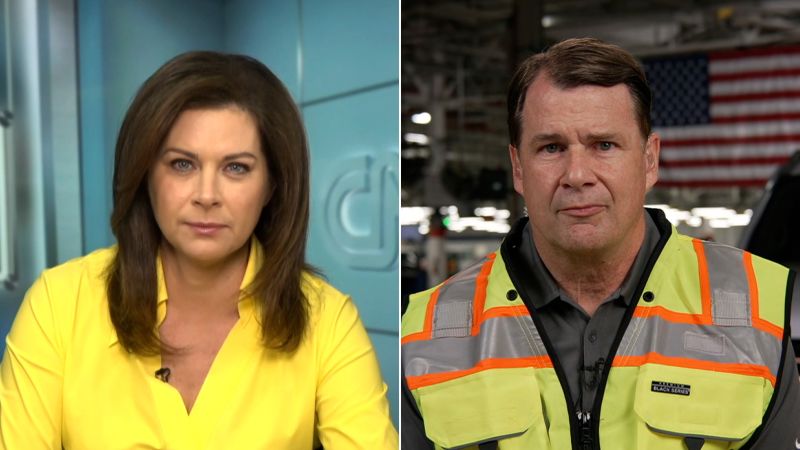In a recent announcement, Ford CEO Jim Farley revealed an extension of the automaker’s employee pricing offer to car buyers, which will now run through July 4. This decision aims to stimulate sales amid rising consumer anxiety caused by new tariffs imposed on imported vehicles and parts. The continued push for competitive pricing reflects Ford’s strategic response to market conditions, a theme Farley elaborated on during his conversation with CNN’s Erin Burnett.
Farley indicated that while Ford is trying to maintain affordable pricing for its vehicles, there is uncertainty regarding future price increases following the end of the employee pricing initiative. This uncertainty is influenced by the pricing strategies of competitors, particularly as Ford boasts a higher percentage of domestically manufactured vehicles compared to many of its rivals. He noted, “We want to keep our prices competitive and low,” emphasizing that Ford has a unique operational footprint and less exposure to tariffs compared to other manufacturers.
The automotive industry has been significantly affected by tariffs, particularly a 25% tax on all imported vehicles, applying pressure on manufacturers to raise prices. It has been estimated that the cost to consumers will likely increase as manufacturers adapt to the financial impacts of these tariffs. Notably, approximately 46% of US car purchases in the previous year were foreign-made, with the bulk coming from Mexico, highlighting the importance of imported vehicles in the market.
As the tariffs on auto parts come into effect soon, even vehicles assembled in the United States will not escape additional costs. Farley noted the fundamental necessity of importing some components as domestic sourcing is not always feasible. This reality underscores the interconnectedness of global supply chains and the challenges faced by American manufacturers looking to remain competitive.
President Donald Trump recently announced efforts to alleviate some of the existing tariff burdens, but the implications of new tariffs remain contentious as cars assembled in the US will still incur additional costs if a significant portion of their parts are sourced from abroad. Farley mentioned that, despite daily collaboration with Trump’s administration, a concrete solution remains elusive and requires thorough discussions to ensure the well-being of the American auto industry.
The economic landscape faced by automakers is intricate, and sourcing parts affordably is crucial for maintaining vehicle prices within a competitive range. He reiterated the importance of balancing quality with affordability, particularly as the auto industry transitions toward focusing on vehicles made within America. During a subsequent event, Farley remarked that the changes announced regarding tariffs would indeed alleviate some pressure but stressed the need for ongoing cooperation with the government to create a healthier automotive environment.
Research from the Anderson Economics Group suggests that the auto parts tariffs could escalate production costs significantly, although recent adjustments might decrease these costs slightly. While these adjustments represent a significant step, the overall tariff impact remains substantial from the consumer’s perspective.
Furthermore, this employee pricing initiative is part of Ford’s broader campaign, “From America, For America,” aligning with the administration’s push for increased domestic production. The reality remains that many automakers, including Ford, still manufacture a considerable percentage of their vehicles overseas. Notably, Ford’s increased domestic production still leaves a reliance on parts sourced from lower-cost countries.
At a rally, President Trump claimed that his tariff policies are compelling automakers to invest in American production. However, experts caution that significant changes in manufacturing locations or the establishment of new plants will require considerable time and investment, indicating that any immediate shifts are unlikely. For instance, Stellantis and General Motors have made modest adjustments to their production strategies, but these changes are mostly internal and stem from prior agreements rather than consequences of new tariffs.
Ultimately, Farley’s comments encapsulate the complexities faced by modern automakers in navigating tariff implications while striving to maintain affordability and competitiveness in a dynamic market landscape. The future of American automotive manufacturing hinges significantly on adaptive strategies and the ability to respond to evolving economic conditions. As the industry grapples with these challenges, ongoing dialogue between automakers and government leaders will be critical for ensuring a thriving automotive sector.



